Show notes
Background: Why I don’t trust news organs I usually find reliable to report the news from Israel and Gaza accurately:
What COGAT says:
The image above came from a video; here’s the full footage:
COGAT didn’t provide a translation, and I don’t speak Arabic. So I put the video through an AI program for translation and subtitles, which resulted in gibberish:
My best guess, from the context, is that they’re saying something like this:
First Man: We’re now living from day to day, and our daily sustenance depends on aid. Capone will give you a box.1 What do you do, under duress, about the things you’re deprived of? The things you see with your own eyes are impossible to buy. For example—you have a kilo of sugar for 80 shekels.
Second Man: These prices ruin people’s homes. People don’t have the money to buy it or do anything else. You can buy one or two. In Ramadan. How are we supposed to live? We won’t be able to live. I mean, in this time, there is no work or anything. We’ve been displaced from Gaza to here. We’re sent one place, then another. Fascists, I mean, the Jews, beatings and beatings on our heads, and there is nothing to eat or drink.
Third Man: A coconut for 15 shekels, a cabbage for 20, and I sell tomatoes for six shekels or five shekels, I brought peppers, but I can’t sell them, because no one is working. No one has a job. Not even one. Is there a job anywhere? Where can I get it? Where does the money come from? Where do we get it from? Where do we get it from? God, it is what it is.
I could be wildly wrong, but I think it’s something like that. (Perhaps one of our Arabic-speaking readers could help?)
The video certainly suggests that Gazans are enduring poverty and want. They’re saying, if I’ve correctly understood, that life in Gaza has been gravely disrupted, their circumstances are parlous, they’re miserable, and they bitterly resent it. But this isn’t a scene of starvation, which is, obviously, COGAT’s point. I don’t know how much disparity there is from one part of Gaza to another, but I don’t see famine in this video.
On the same day, the Washington Post published an article titled, “How Israel’s restrictions on aid put Gaza on the brink of famine.”
On Saturday, the United States airdropped 38,000 meals into Gaza—a territory controlled not by a hostile foreign power but by one of its closest allies.
The remarkable scene of American aid bundles floating down to starving Palestinians was the starkest illustration yet of the rift that has grown between the Biden administration and the Israeli government over the Gaza war. For months, Israel has resisted pressure from Washington to allow more humanitarian aid into the enclave, even as it relies on US bombs and diplomatic support to carry out its punishing military campaign there.
Several paragraphs down, it says,
Israel says it is not limiting the delivery of aid to Gaza, and it has blamed the United Nations for failing to distribute it to those in need—or worse, diverting aid to Hamas.
So who’s telling the truth? Is Israel limiting aid or not? This shouldn’t be hard to answer. The Post could send a journalist to Israel to stand in front of one of the crossings that Israel says is open and see if any trucks go through it. Why aren’t they doing that?
On March 9, The New York Times put the image below on its front page. In the online version, the headline reads: “The 10-year-old boy who has become the face of starvation in Gaza.” The sub-heading says, “The harrowing image of a skeletal Yazan Kafarneh circulated widely on social media and has served as a graphic warning about the enclave’s dire food situation.”
It’s a shocking image. The article begins:
It is all too easy to trace the skull beneath the Gazan boy’s face, the pallid skin stretching tight over every curve of bone and sagging with every hollow. His chin juts with a disturbing sharpness. His flesh has shrunk and shriveled, life reduced to little more than a thin mask over an imminent death.
In one of a series of news photographs of the boy, Yazan Kafarneh, taken with his family’s permission as he struggled for his life, his long-lashed eyes stare out, unfocused. In that widely shared picture online, his right hand, bandaged over an intravenous line, contracts in on itself at an awkward angle …
Then they arrive at a detail that might easily be overlooked:
… a visible marker of his cerebral palsy.
Cerebral palsy is a dreadful disease. The majority of children with severe cerebral palsy do not reach adulthood. The malady is often characterized by difficulty eating and swallowing. This causes malnutrition, which has a major impact on life expectancy. Other symptoms include accelerated musculoskeletal aging, accompanied by severe muscle atrophy:
The clinical observation of muscle wasting has prompted a comparison with sarcopenia in older adults, and the term accelerated musculoskeletal ageing is often used to describe the hallmark phenotype of CP through the lifespan.
Obviously, it’s fully possible—likely, even—that this child’s death was hastened by malnutrition, lack of medical care, and the terrible stress of fleeing from bombardment. But is this truly “the face of starvation in Gaza”—that is, a typical, representative face in Gaza, a face that gives readers an accurate sense of life in the Gaza Strip right now? Or is this the face of late stage, severe cerebral palsy?
Is this face a warning about Gaza’s “dire food situation?” Or is it a warning that The New York Times will violate the dignity of a dying child just so it can tell you—yet again—that there are no depths to which Israelis won’t sink? “Look what the Jews did! They starved him to death!”
The article continues:
Five months into Israel’s campaign against Hamas and its siege of Gaza, hundreds of thousands of Palestinians are close to starvation, United Nations officials say. Almost no aid has reached northern Gaza for weeks, after major UN agencies mostly suspended their operations, citing mass looting of their cargoes by desperate Gazans, Israeli restrictions on convoys and the poor condition of roads damaged during the war.
Again, I’m stumped. They suspended their operations to feed people who are “close to starvation” because the roads are damaged?
Israel categorically denies that it’s restricting aid convoys. COGAT points out that private sector aid trucks aren’t finding the bad roads an insuperable barrier:
Either COGAT or the UN—as I say in the podcast—is lying. Neither the Times nor the Post seems to think that getting to the bottom of this question matters; they’re content with intimating, repeatedly, that Gazans are starving because Israelis are deliberately starving them.
Here’s the interview with the interesting Kurdish-Swedish journalist I mentioned:
And here’s Israel’s ambassador to the UK. (I take John’s point that this isn’t diplomatic, but man—I get where she’s coming from.)
Update: I have to say I’ve searched in vain for a clip that shows Tzipi Hotovely saying something with which I truly disagree. I have seen terrible Israeli diplomats in action (I could tell you stories—oy), but she seems fine to me. And her critics seem insane. (Anyone who gets Owen Jones as lathered up as she does can’t be all bad.)
I wonder if “Capone” means Hamas.








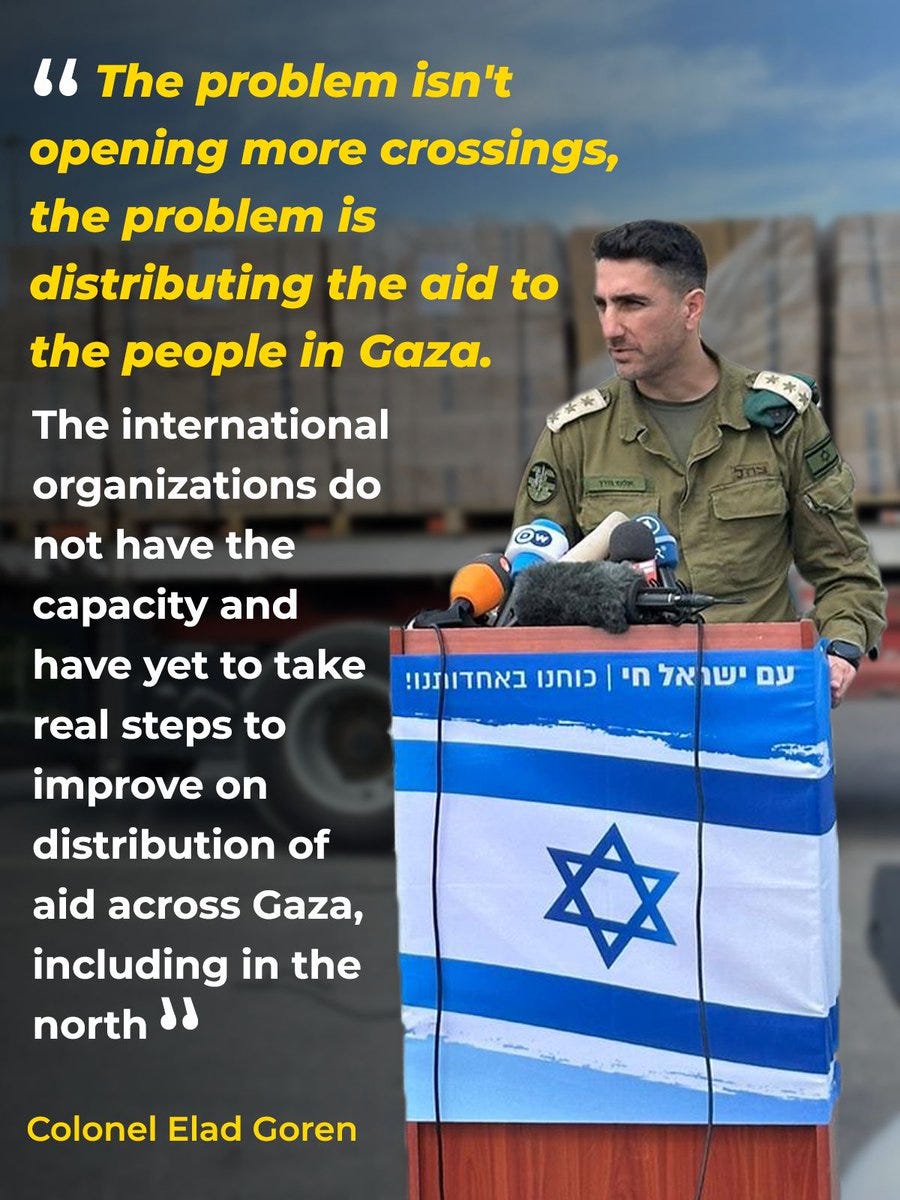
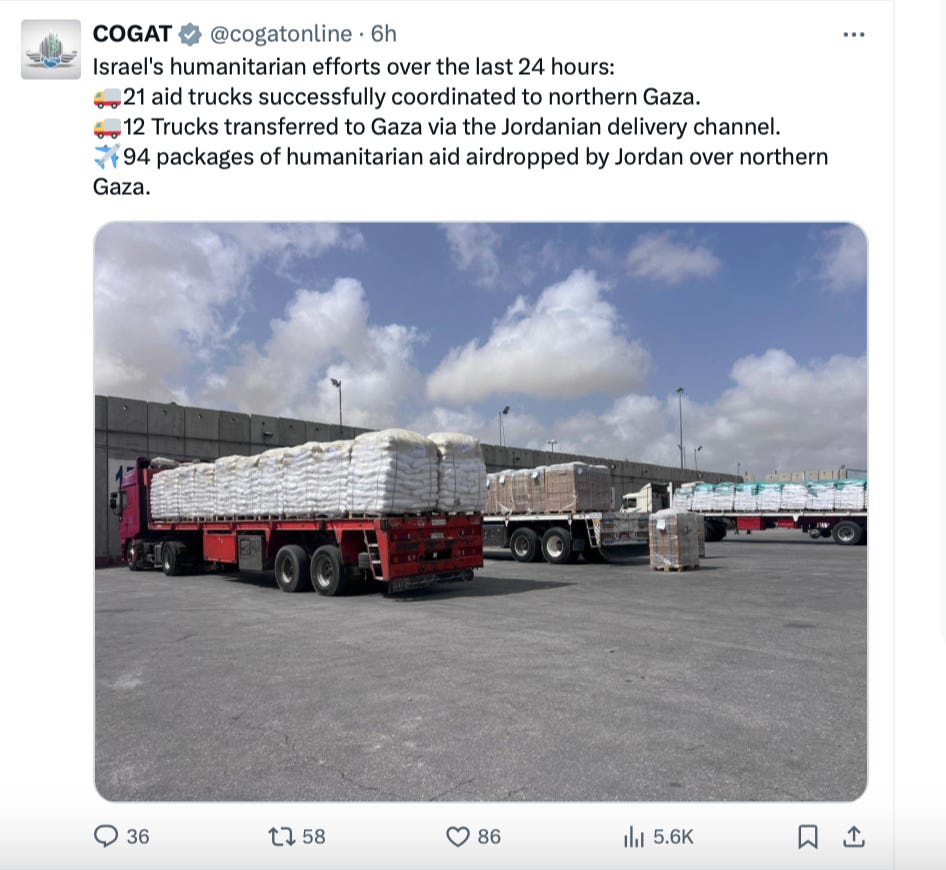
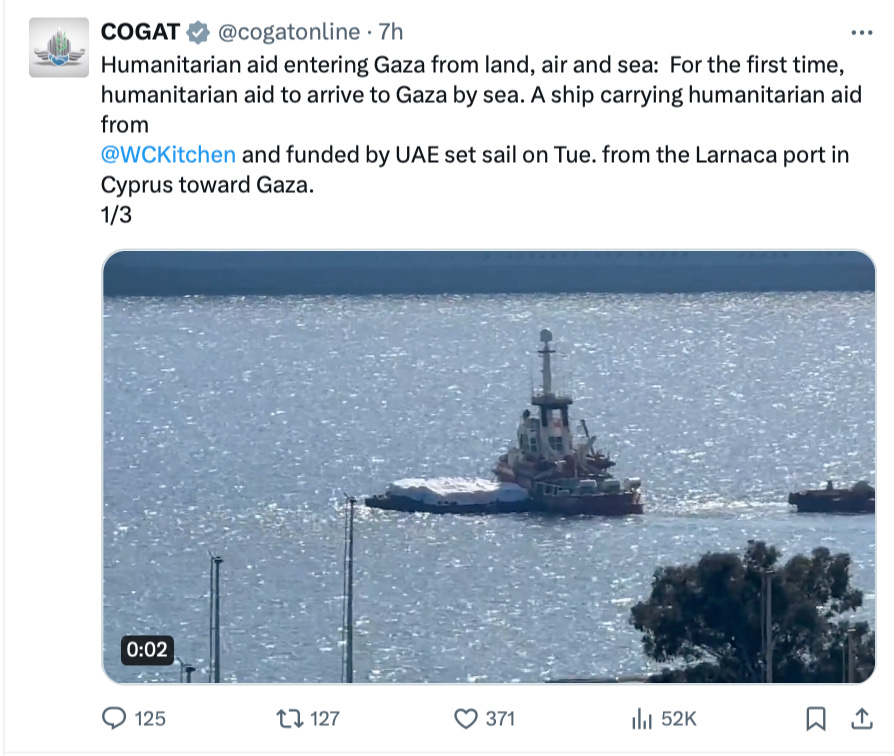
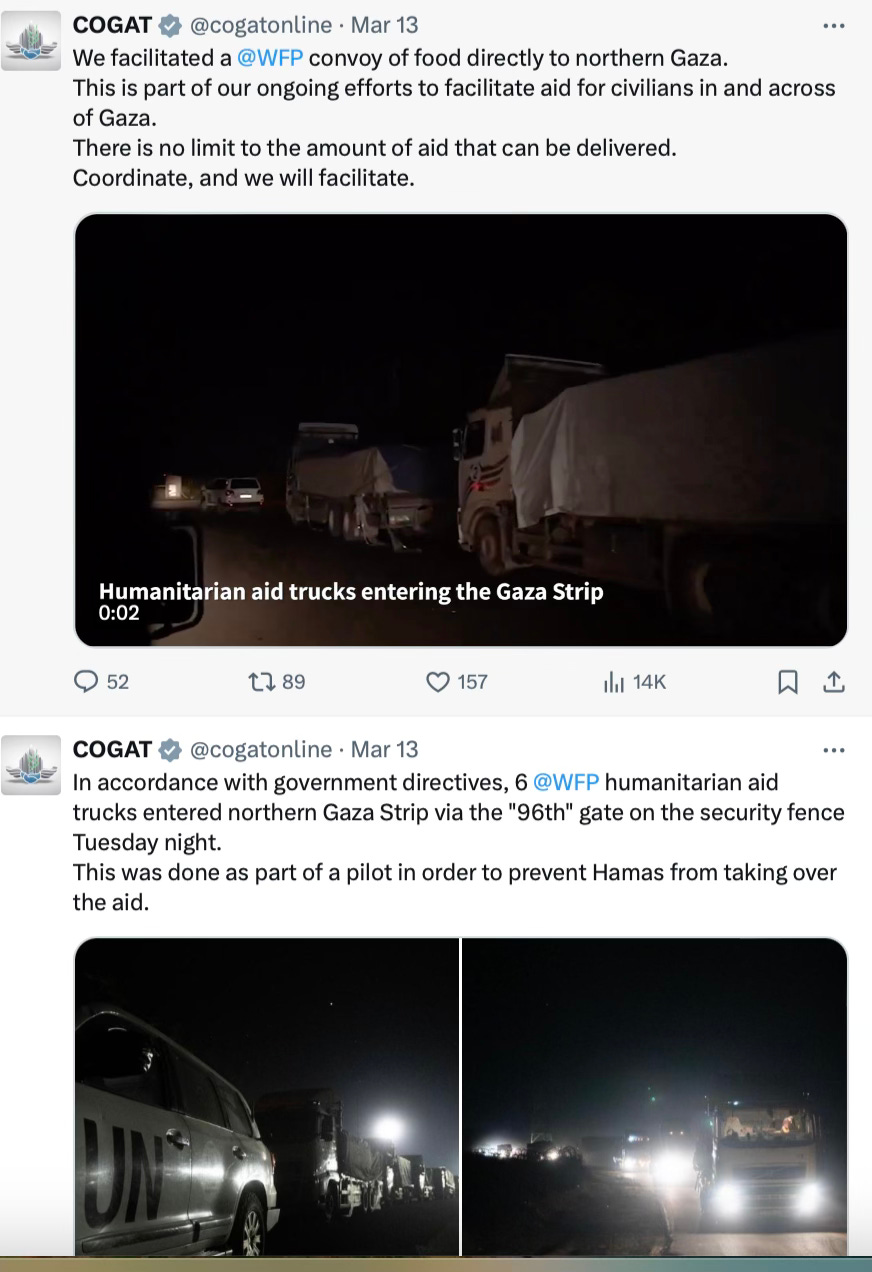
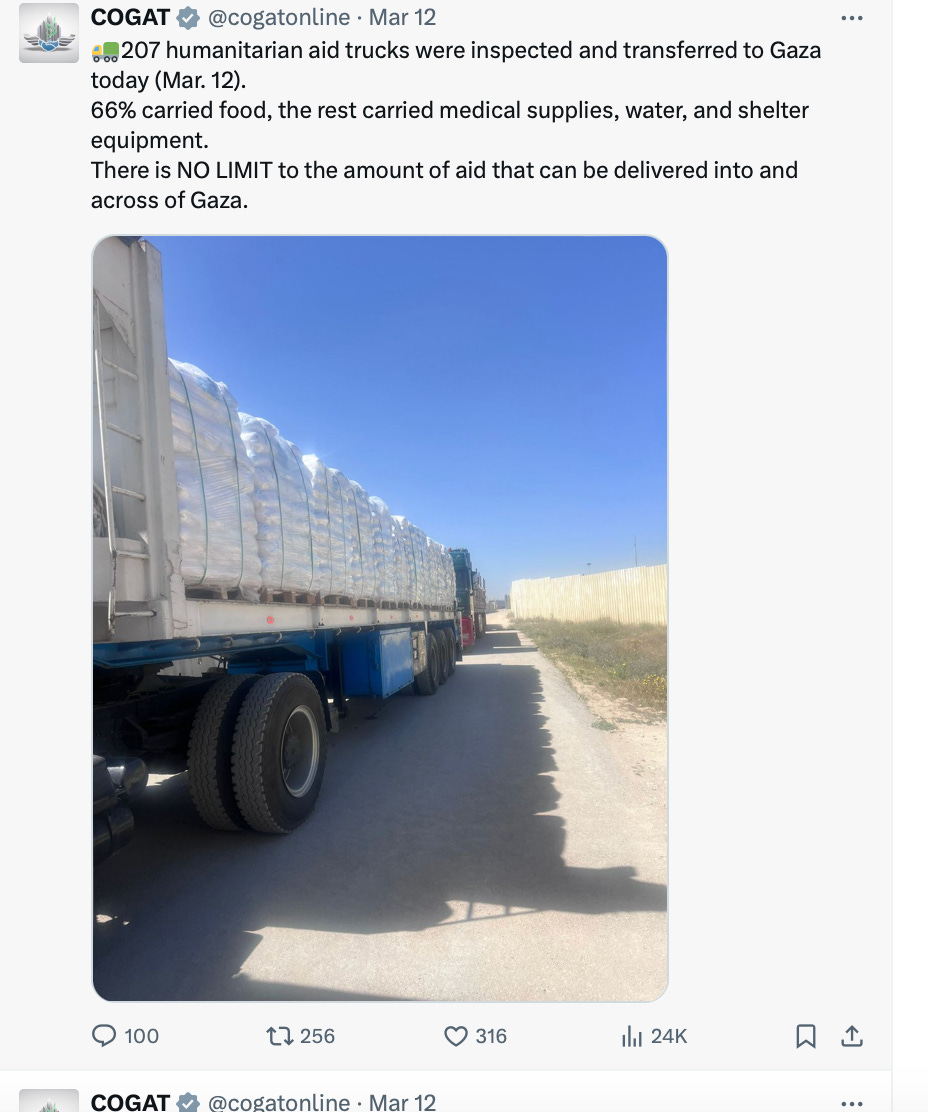
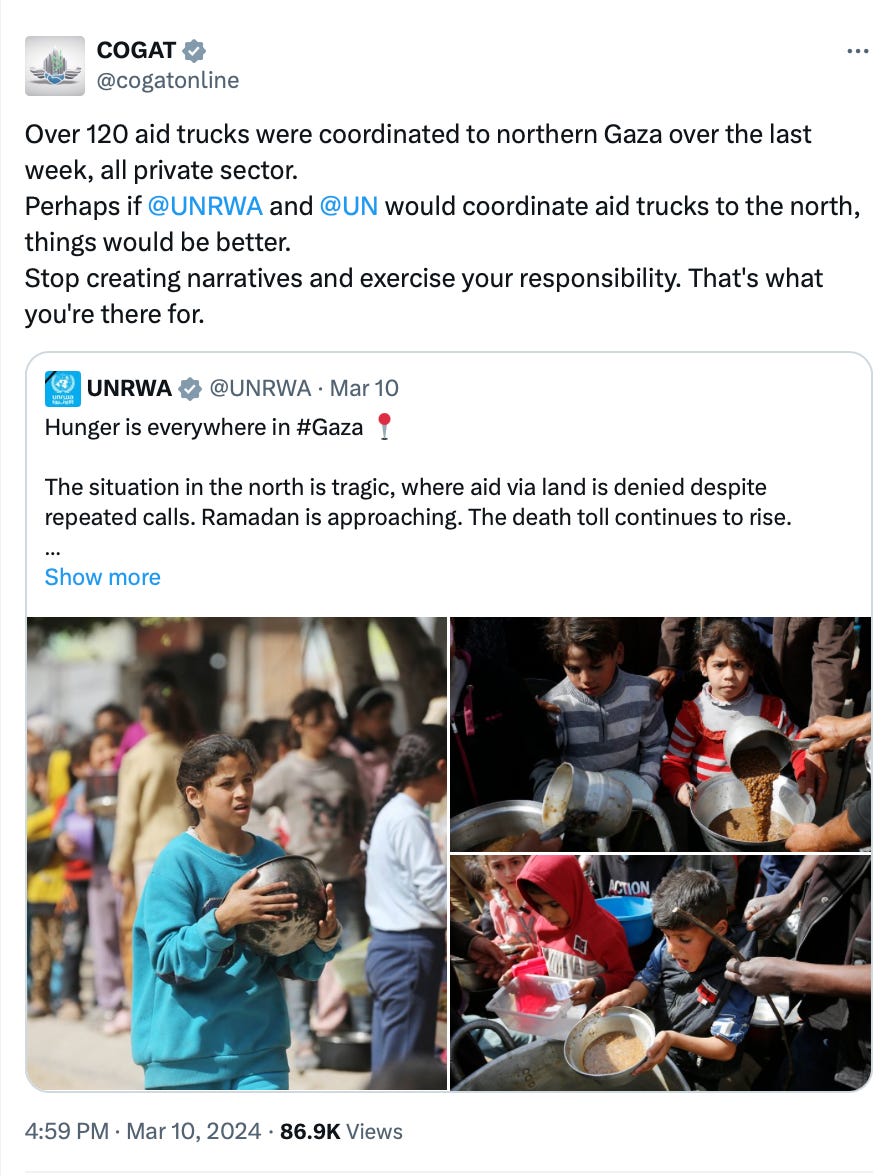
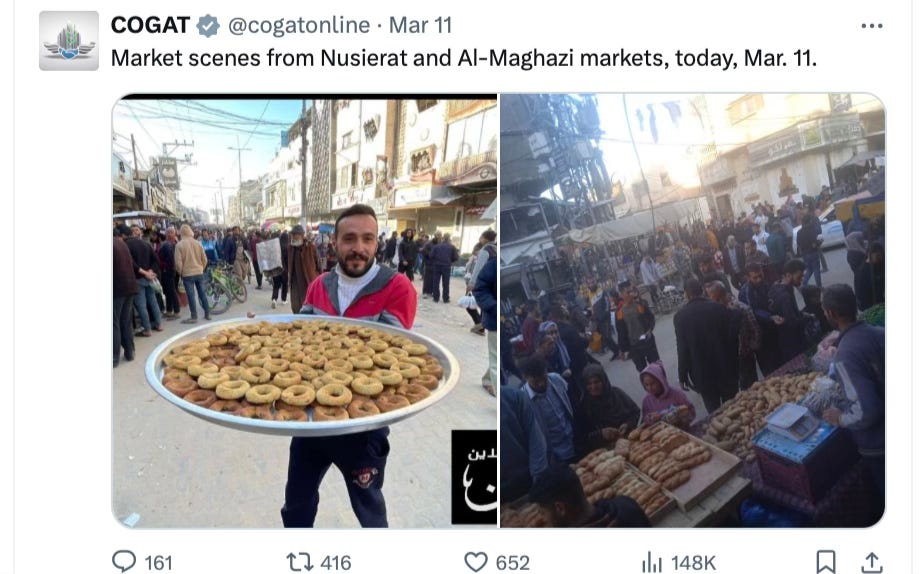
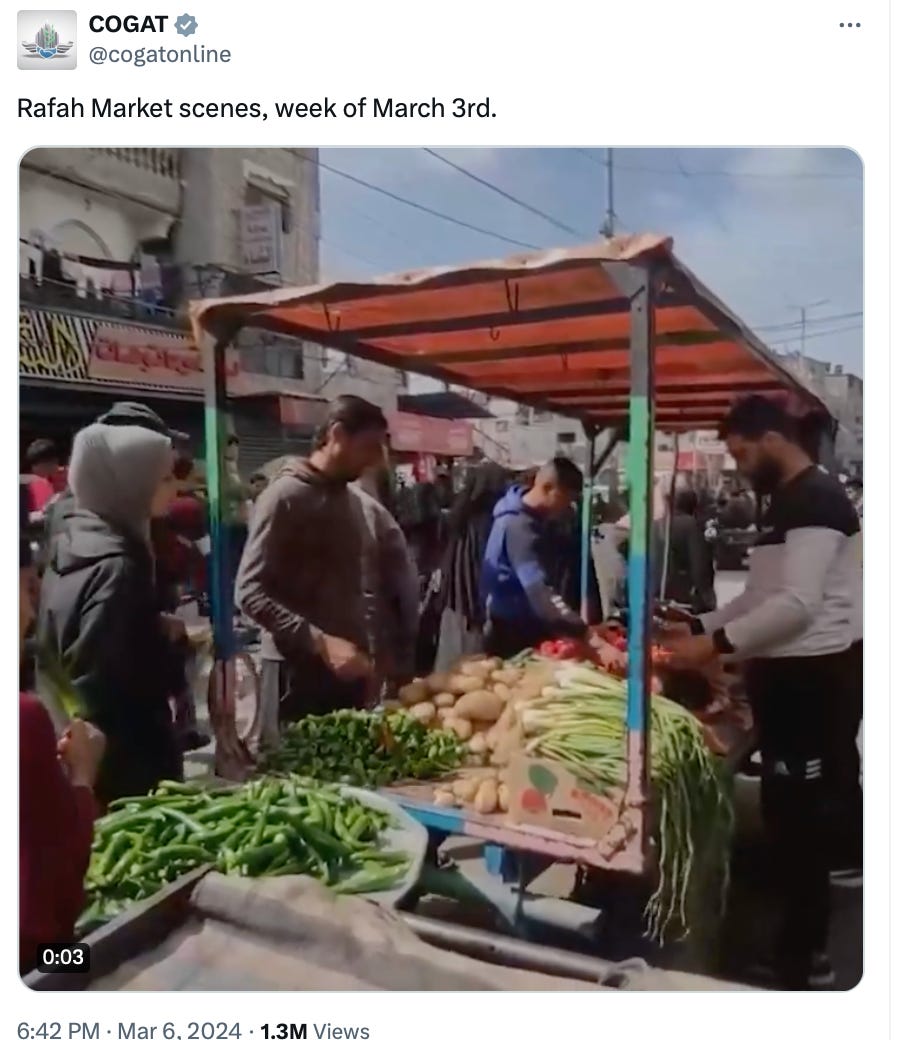
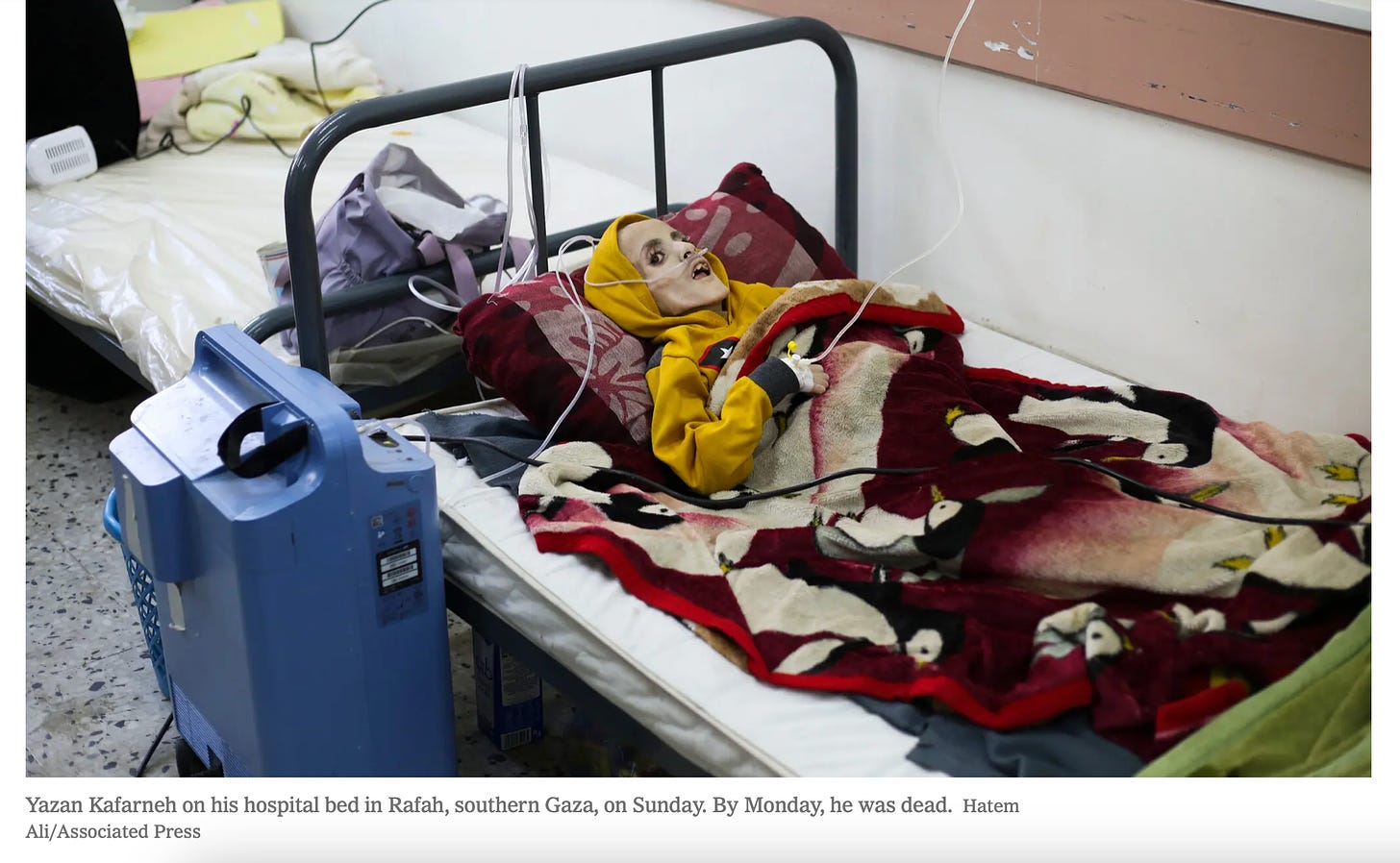
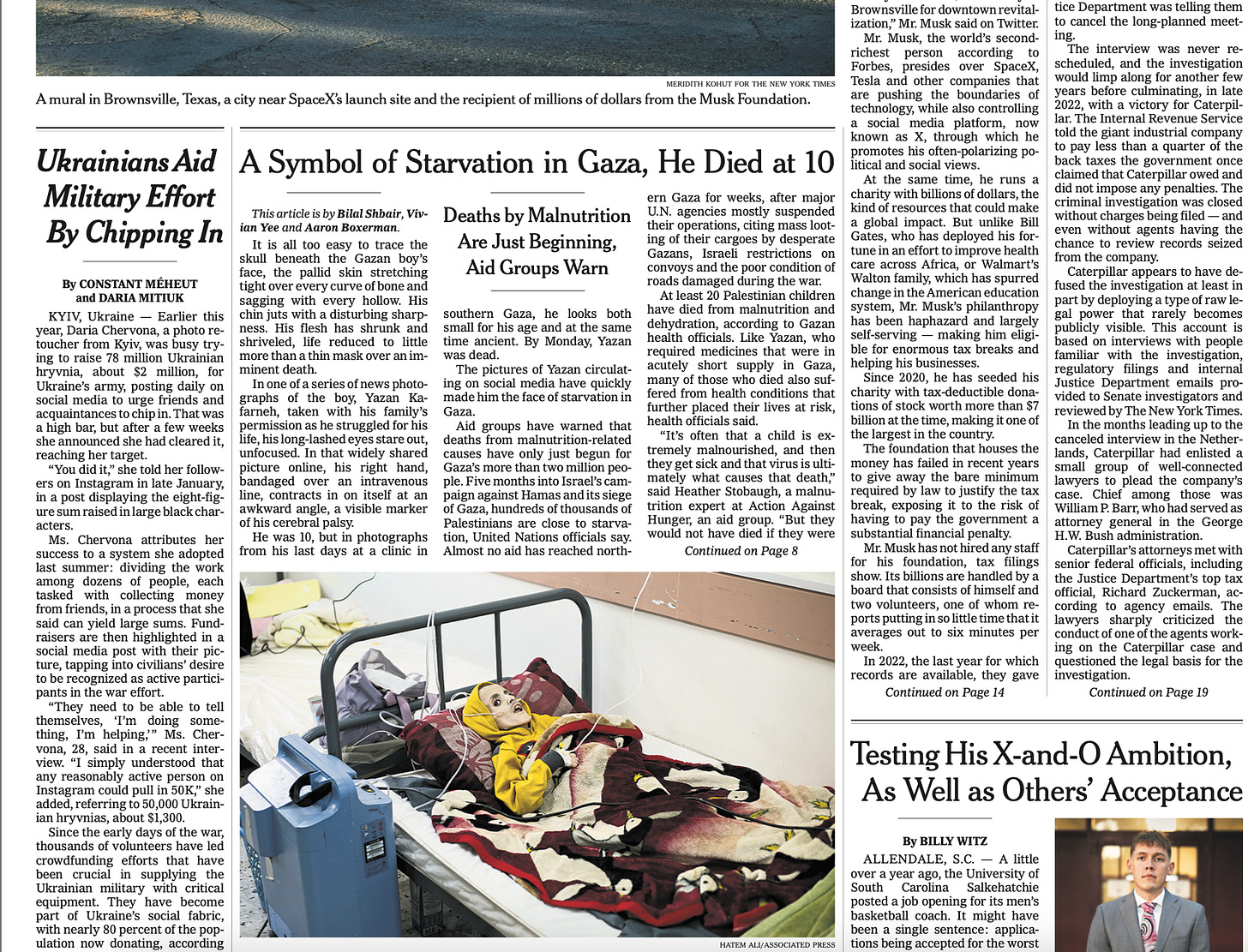
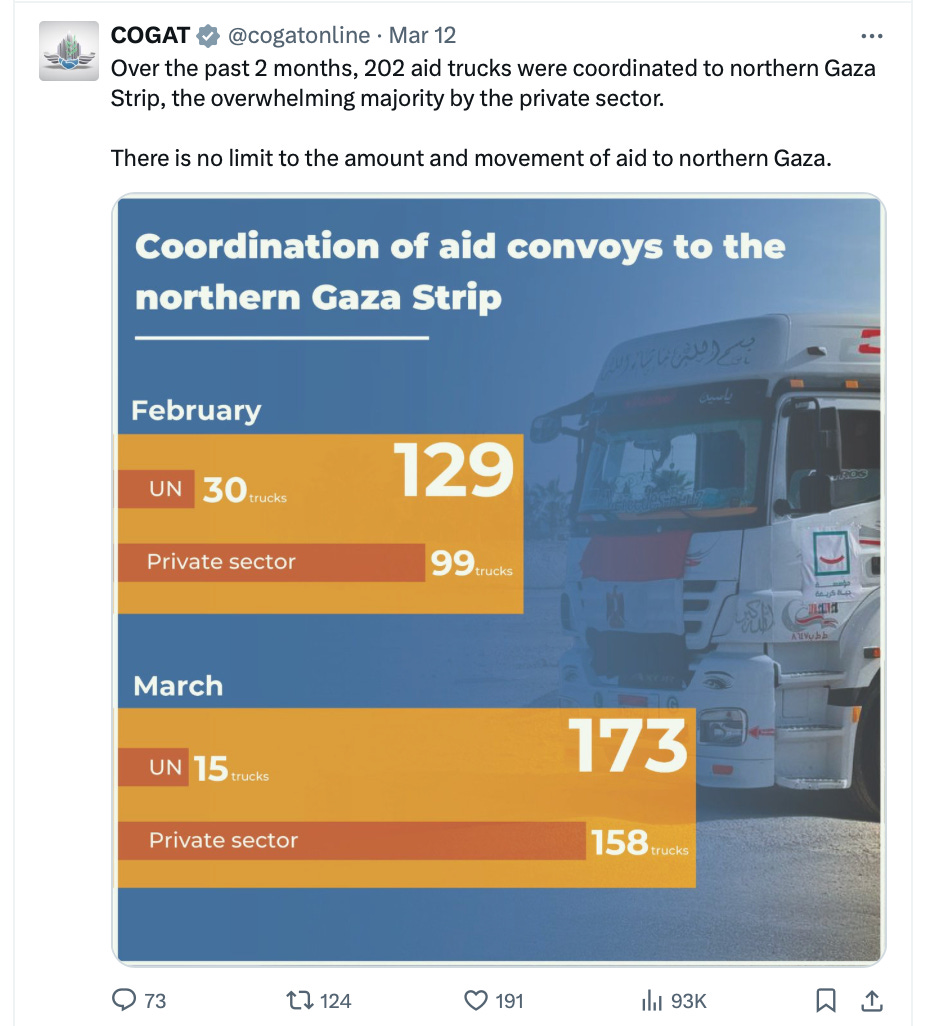
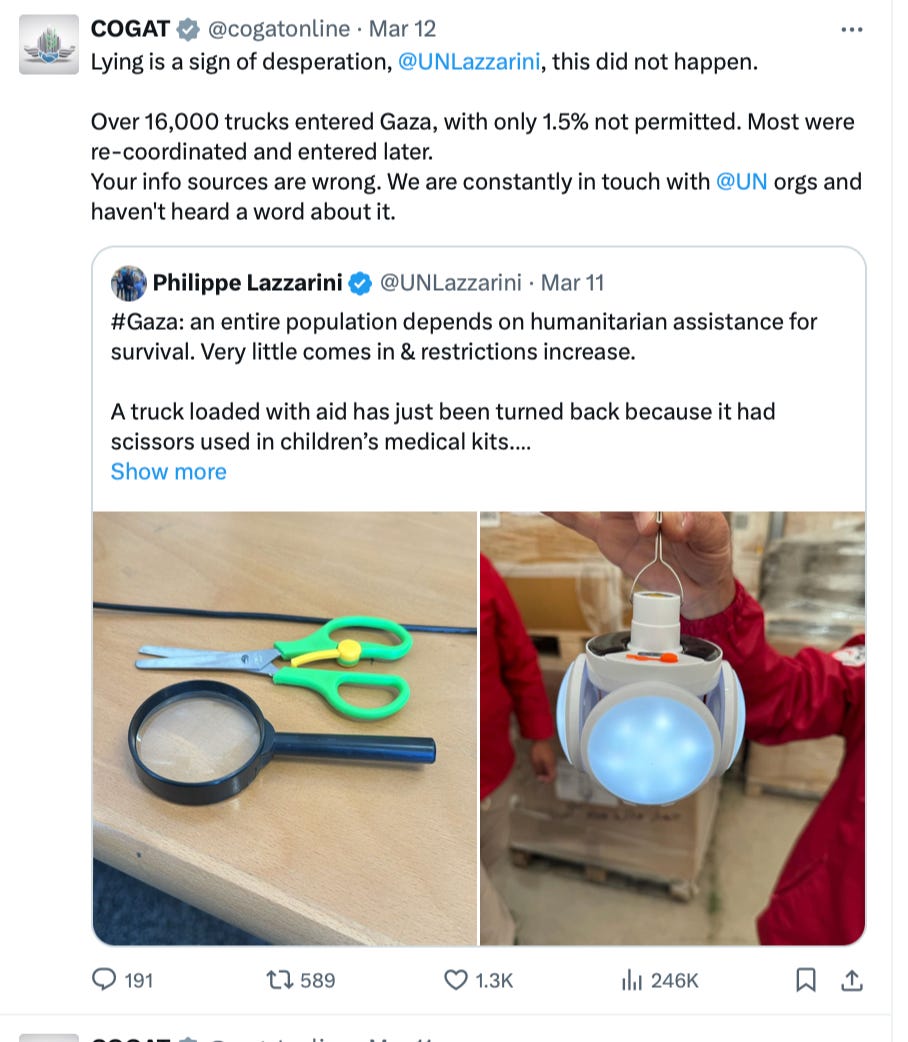







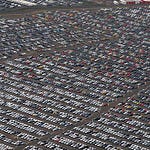



What's really going on with aid deliveries to Gaza?